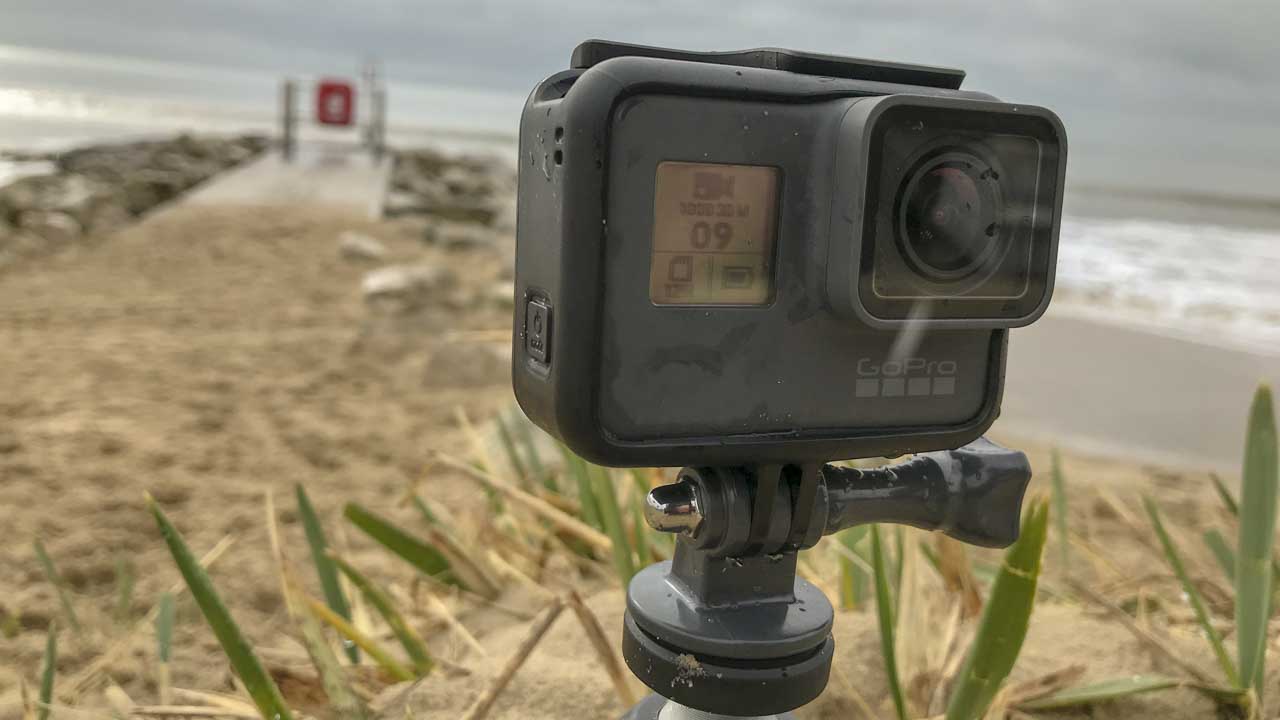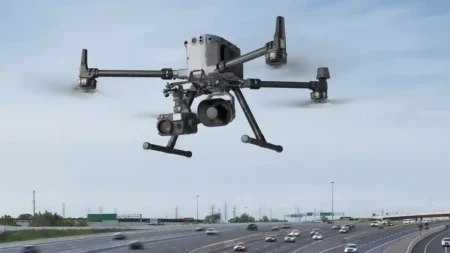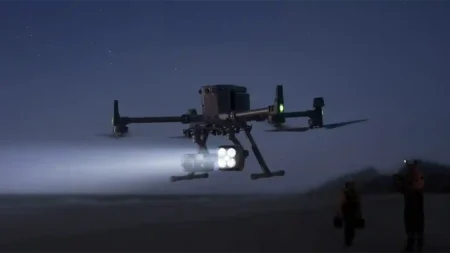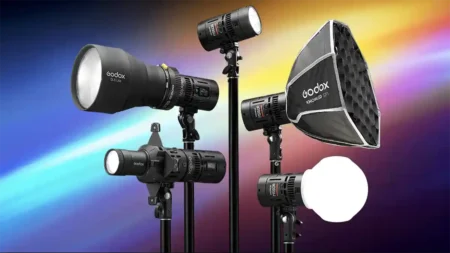[nextpage title=”Introduction” ]
What is the GoPro Hero 2018?
The GoPro Hero 2018 has arrived and we’ve snapped-up a sample to crack-on with our GoPro Hero review. On the surface, it looks identical to the Hero5 and Hero6 Black but it’s half the price.
However, it’s still double the price of many other entry-level action cameras. Can the Hero 2018 really appeal to the mass market at the price?
Let’s not forget that the Hero isn’t the first entry-level Hero camera from GoPro. A GoPro Hero entry model appeared in 2014 and met with limited success. With touch screen and voice control and we think it’s going to be a runaway success.
Features
The design of the GoPro Hero 2018 is identical to the GoPro Hero6. You can only tell the difference by the HERO logo without a version number printed on the side.
As with the 5 and 6 the Hero features a cage system waterproof down to 10m.
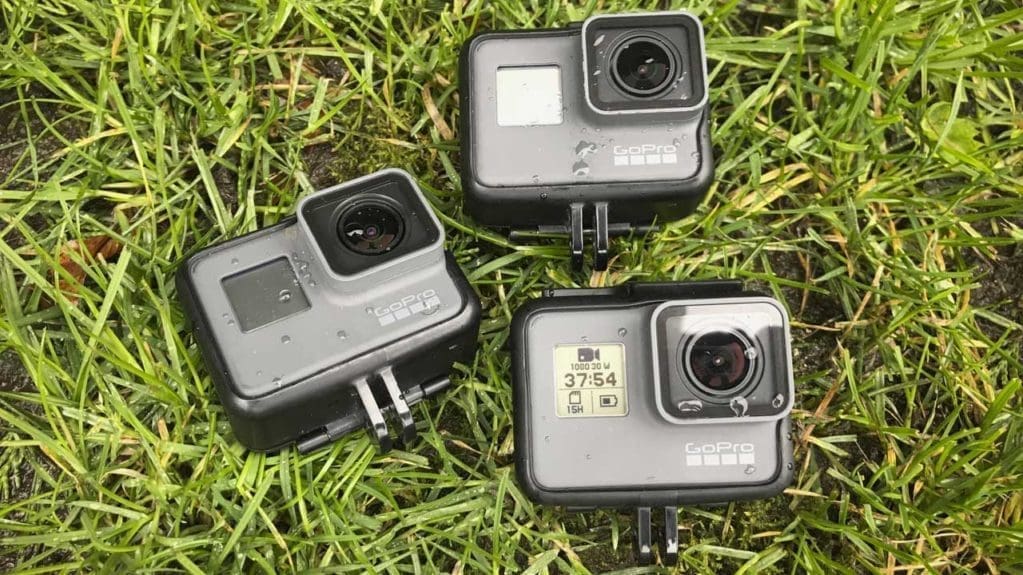
The touchscreen is the same 2-inch affair as we’ve seen before. All the buttons are in the same position as on the Hero5 Black and Hero6 Black. As with the 5 and 6 the lens can be easily removed and replaced if needed.
The feature list is pretty short. GoPro Hero is designed to be used rather than faffed around with, meddling with settings. It’s apparent that this is a stripped down GoPro for those who just want to get out and have fun.
GoPro Hero Resolution
The sensor in the Hero 2018 hasn’t been announced, but suffice to say it’s not the GP1 chip. If it is the GP1, then it’s been massively restricted. The resolution options are 1440 or 1080, but there is no 4K video mode. Each resolution offers a frame-rate of either 30 or 60fps.
As well as video mode there’s Photo, Burst, Time Lapse Video and Time Lapse Photo. Time Lapse photo is only available at 1080p.
Photos can only be taken at 10mp. This limit on options continues through the rest of the camera with each mode offering a short list – if any.
The lens has the usual wide GoPro field of view that gives footage the distinctive fish-eye look. However, in each of the resolution options, you have the choice of Wide, Medium or Narrow field of view.
Audio on the GoPro Hero is impressive with similar if not the same mic’s placed around the body as with the GoPro Hero 6. It’s unclear through the literature available as to how many mic’s are placed in and around the GoPro.
Alongside the shooting modes, you also have the option to switch on basic video stabilisation and Auto Low Light mode. Although the design is the same as the Hero6, the camera is not (at the time of writing) compatible with the Karma Drone or Grip.
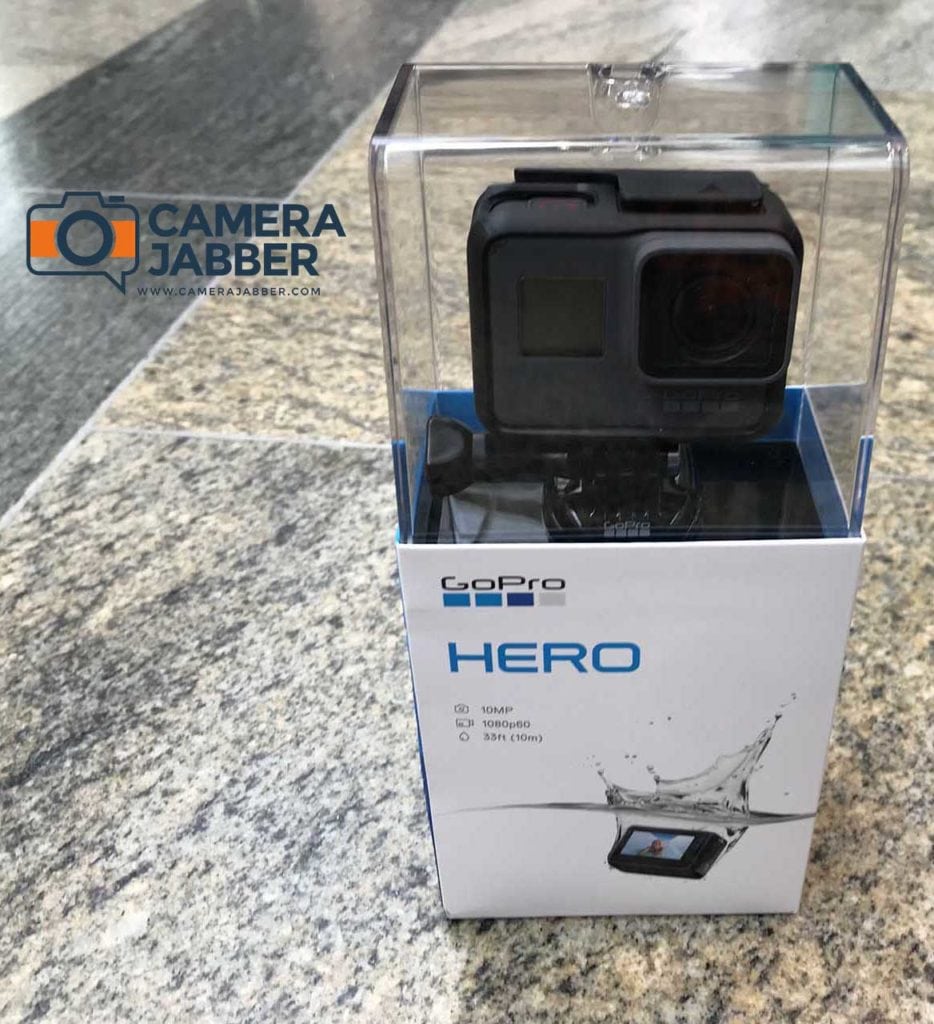
[/nextpage]
[nextpage title=”Build & Handling” ]
Build Quality and handling
There’s little to add about build quality over what we’ve said before about the GoPro Hero5 or Hero6. Compare this camera with any action camera at a similar price, and the step-up in build quality is instantly apparent.
Where the big differences come between the GoPro Hero 2018 and previous GoPro cameras is in the ease of use.
The Hero6 Black leapt forward when it came to ease of use compared with the Hero5 Black and the previous generations. The Hero6 options and screens were simplified making it faster for the user to find and adjust options.
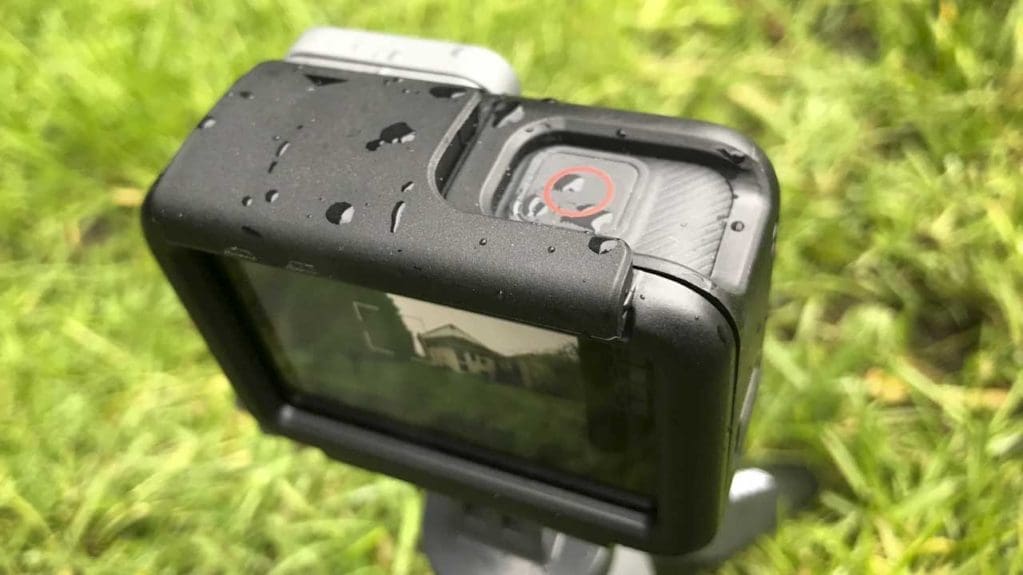
The Hero 2018 takes this even further by only offering a maximum of three settings per option, and that maximum is only used for the field of view. The resolution and frame rates are really simple with just two options apiece.
Rather than being any hindrance, the limited choice cuts any decision making so you get on with whatever activity it is you’re about to do, without worry about settings.
During the test, I used 1080p at 60fps when the sun was out and dropped this to 30fps when clouds appeared. In the past, I’ve found that this helps with the quality of the video footage.
That 2-inch touch-screen is a joy to use and is incredibly responsive if you do decide to change any of the settings. Swiping the screen enables you to access the advanced settings as well as preview the footage you’ve shot.
All the on-screen options work well, and the camera’s screen is responsive, even when it’s is soaked with rain.
The voice activation makes sense with the Hero 2018, although I still feel a little-embarrassed shouting at the camera to start and stop recording.
Streamlined
The overall handling of the Hero 2018 is as good as the Hero6 Black. The more limited options make it far more streamlined than any other GoPro which in turn makes it almost entirely foolproof. Although, that may not be appreciated so much by advanced users.
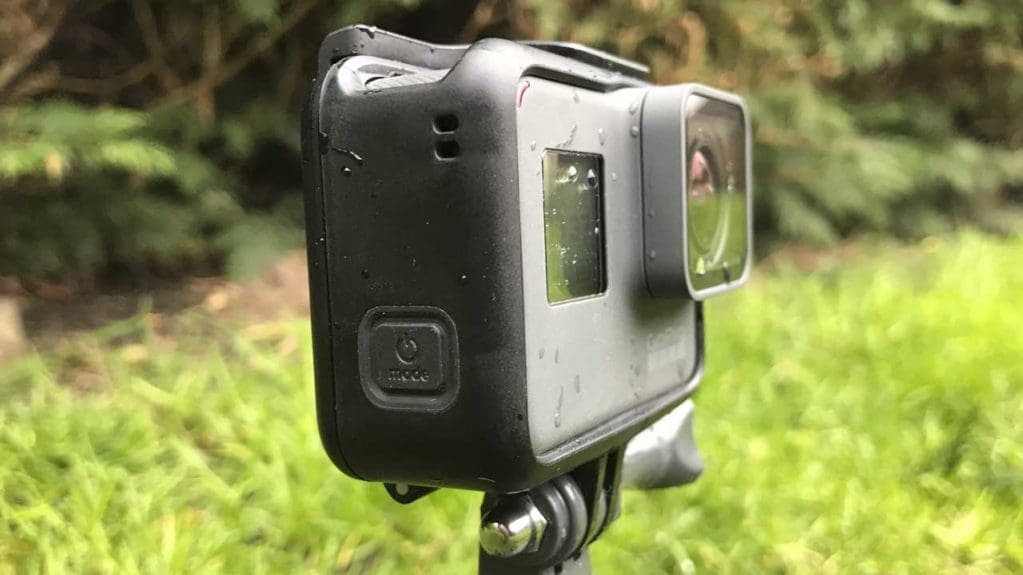
Wireless Connection
As with all recent GoPros, Wi-Fi connectivity and a compatible app come as standard. Connecting to the app on a smartphone couldn’t be easier; swipe down and select connect on the GoPro. Then on your mobile device, ensure that you have installed and opened the GoPro app, then click the prompts and you’re done. The whole process takes about 2-3 minutes and seems far less painful than any connection of this type that I’ve had to do in the past.
Once connected, you have direct access to all the GoPro camera’s settings on your phone. You also get the live view stream; this has about a second delay unlike with the Hero6 which is almost instantaneous. The layout of the screen is the same as with all other GoPro cameras and it enables you to start and stop recording by tapping the large record button at the base of the screen.
[/nextpage]
[nextpage title=”Performance” ]
Performance
There’s far less to delve into with performance on the Hero 2018 compared with GoPro’s last three releases. It’s also another camera that breaks my basic rules for action camera specifications: 1080p at 60fps and 4k at 30fps. It hits the 1080p 60fps requirement but doesn’t offer any type of 4K option. I find this disappointing, especially as there is a 1440p option.
I can only guess that the inclusion of 1440p is to give users a little scope for cropping into the image for better composition during editing. However, as this camera is all about simplicity, I would have thought that cropping to improve composition would be a slightly more advanced feature.
No 4K Video
4K video is fast becoming standard but it still presents some issues for some mobile devices and computers, whereas just about anyone can edit HD video. Nevertheless, the inclusion of 4K video capability would have future-proofed the camera for a few years.
As it is, I imagine that the majority of people will stick to shooting 1080p at 60fps as this is probably the most widely compatible option for editing and playback.
Another disappointment is the lack of compatibility with the Karma Grip and Drone. The drone may be discontinued, but the grip is still very much on sale. I would have thought that the new Hero would be an ideal Karma Grip partner, but at the moment if you plug it into the Karma Grip, you just get the ‘connected to USB’ screen showing on the GoPro. Maybe this will change with a firmware update in the near future?
Impressive built-in stabilisation
Saying that, the built-in image stabilisation works incredibly well, and although it’s not quite up to Karma standards it’s still impressive.
For any camera, the longevity of the battery is an important factor, and the new GoPro Hero has an impressive recording time of 2 hours and 5 minutes when filming 1080p at 60fps. Around an hour and a half is still the average for most action cameras.
It’s also good to see that the battery is replaceable, so if you are out for a long ride or away on holiday then a couple of spare batteries should easily see you through.
As with the GoPro Hero6, the Hero 2018 has the exposure lock feature. This works by holding your finger down on the screen for a couple of seconds. Once the exposure box appears you can then shift the point of exposure around the screen and then click to lock. This is a little-known option but it’s incredibly useful when you’re filming.
Video Quality
Aimed at the entry-level there is no visible decrease in the image quality at the available resolutions when you compare the footage with that shot on the GoPro Hero 6.
Colours are clear and vibrant and the amount of detail and tones really is impressive. Switching between 30fps and 60fps it’s hard to see any difference in the actual quality. Only moving objects within the frame highlight the increase in framerate by being slightly more fluid in movement.
Shooting at 60fps does to some degree mask and drop in frame quality. Looking at the bitrate and it shows that at both 30 and 60fps the average Mbit/s is around 30, which for a camera of this size is impressive.
Colour and tone and both framerates looks crisp, clear and vibrant and even in the relatively dull weather conditions on the first day of the test the small camera was capable of capturing a good amount of shadow and highlight detail.
Decent quality replaceable lens
Later in the test and with the backing of a couple of sunny days and the camera really came into its own with beautifully vibrant colour that showed an abundance of detail.
The lens did show the usual signs of mild fish-eye distortion, but this is all part of the GoPro look and it would be disappointing if there was an absence of distortion. There are little to no signs of Chromatic aberration towards the edges of the lens or at the contrast edges.
Having a lens that can be easily replaced is an essential for any true action camera, as by the very nature of the genre they’re going to get damaged. Quite often this damage will effect image quality so a new lens is often a quick and easy way to revitalise your camera.
One of the advanced features is the Image stabilisation and this can be switched on and off as you need. Once activated it does reduce you FOV by 10% but then if you’re using the camera for Vlogging then this isn’t really going to bother you too much. The stabilisation effect is excellent smoothing out footage exceptionally well. It’s not quite as good as the Karma but really not that far off.
Audio Quality
Since the release of the Hero 5 there have been a few issues with the GoPro audio with people complaining about it sounding muffled, bad in windy conditions etc. I have to admit that I find the GoPro audio exceptional when compared with many other action cameras, but I have to say that the audio on the Hero seemed to be a step-up.
Standing in front of the GoPro Hero and talking the audio recorded clearly. Even though there was plenty of ambient noise coming from the road I was really impressed with the quality. Moving around the camera and each of the small microphones takes a second or so to catch up but again the quality from each mic is good.
Unlike the Hero 5 and 6 there’s no way to adjust the audio settings and it seems the camera handles all audio levels adjustments.
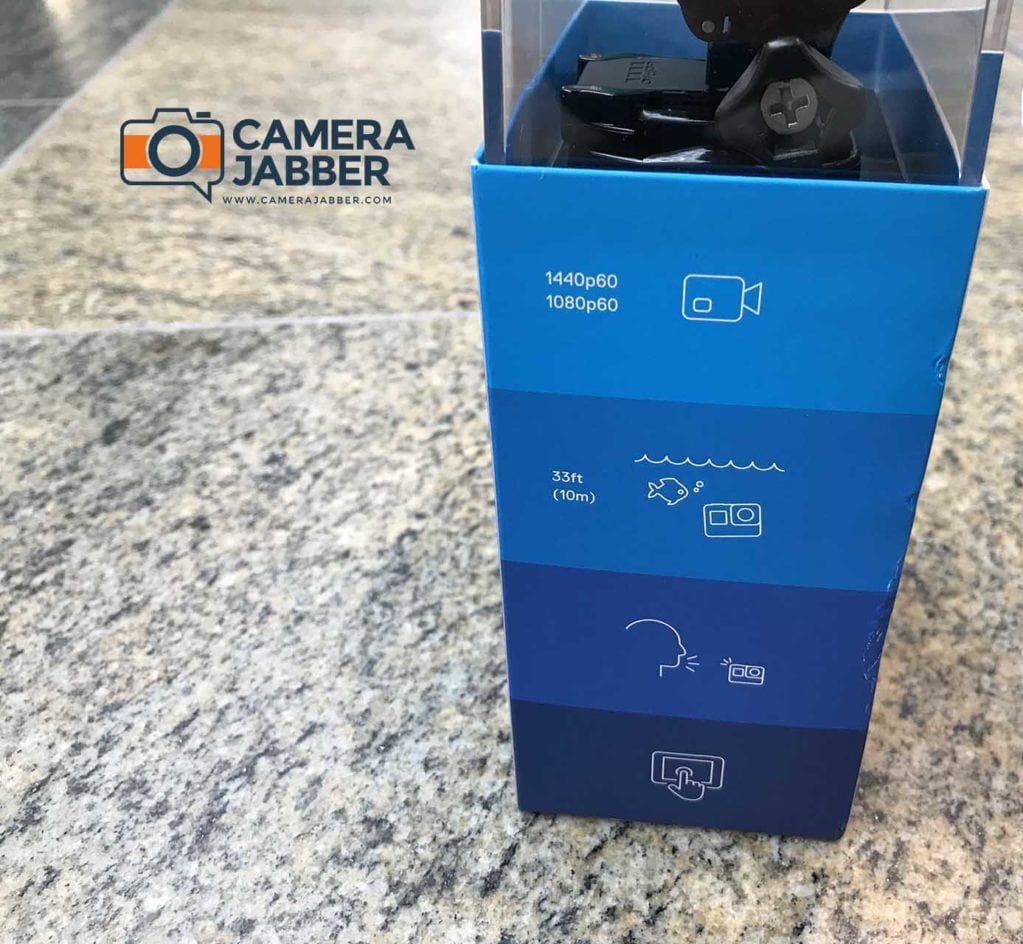
[/nextpage]
[nextpage title=”Sample Footage” ]
Sample Footage
[/nextpage]
[nextpage title=”Verdict” ]
GoPro Hero Review Verdict
It’s clear to see where the company is going with the GoPro Hero. It’s a basic entry-level camera with simple to use features. It also has the GoPro tried and tested solid construction.
Image quality is typically GoPro, bright, vibrant and full of life. Unlike previous GoPro models, there is a lack of adjustability over the image quality, no options for sharpness, contrast, colour or ProTune features.
The lack of any 4K shooting capability and no compatibility with the Karma Grip is also disappointing. While I can accept the omission of 4K video, the incompatibility with the Karma Grip is a little harder to swallow – I’m really hoping that will change. However, if I’m asked for a recommendation for a good solid action camera, I’m very likely to put the GoPro Hero forward as an excellent choice.
I’ve found the majority of action camera users want to shoot video and then show it to their friends. The GoPro does precisely this. It is extremely easy to use and understand. In fact, I think it’s probably the easiest action camera to use that has ever been produced.
When you look at the ecosystem of GoPro app and QuikStories it all starts to make perfect sense because of their usability. Add the touchscreen and voice control into the mix and what you have is a very decent action camera.
Should I Buy the GoPro Hero 2018?
If you need a reliable, solid camera for capturing action and adventures, then the GoPro Hero is an excellent choice. It’s waterproof down to 10m without the need for a housing. It has a responsive touch-screen, is easy to use and records great quality footage. The only downsides are the lack of 4K capability and its (as yet) incompatibility with the Karma Grip.
[/nextpage]
[nextpage title=”Why the GoPro Hero will Succeed” ]
Let’s face it: action cameras are as close to a disposable camera as you can get these days. They might be tough, but when mounted to the front of your bike, especially during the British winter, even the GoPro Hero6 Black is going to sustain some damage.
Arriving home to find a scratch across the lens, paint being chipped off or worse no camera at all is always devastating. Especially when that camera cost a penny less than £500.
In the end, all the old GoPro’s and action cameras get assigned to the action camera bin. That once prized camera then has to be replaced with a new greatest action camera ready for sacrifice.
I’ve taken to using a large selection of makes and models. At the top of the list are the Yi 4K+, Garmin Virb Ultra 30 and of course the GoPro… but these are all expensive.
- GoPro Hero6 Black vs Garmin Virb Ultra 30: which is the best action camera?
- GoPro Hero6 Black vs Yi 4K+: which is the best action camera?
But what if there was a reasonably priced GoPro?
It looks like GoPro is about to announce a discounted, entry-level GoPro Hero. By discounted I mean around the £150-200 price mark.
This wouldn’t put it into the budget end of sub £100 cameras, but it would make it very affordable.
From leaked documents it looks like this new entry level, rather than budget, camera will offer 1080p at 60fps 10-megapixel stills as well as time-lapse.
It will also feature the same design as the GoPro Hero 6 which will mean that it has the touch screen and voice activation.
This would be a major win for the company as it would put the camera in direct competition against many of it’s cheaper competitors.
However having now looked at a fair few action cameras I have drawn up a basic action camera base specifications list. It’s straightforward 1080p at 60fps and 4K at 30fps as minimum specs.
The new Hero hits the 1080p requirement but falls short of the 4K.
However I recently looked at the GoXtreme Pioneer, a seemingly underspec’d action camera, that proved that quality footage always wins out.
Offering 1080p at 30fps and 4K at a token 10fps I almost dismissed the camera completely. But at less than £50 it was out of curiosity more than anything when I took a proper look.
The specifications were limited, but despite that the quality of the footage was great.
With more non-action camera users using the cameras, an action cam with 1080p at 60fps starts to make sense.
The majority of action camera users I meet out on the trail almost all shoot in 1080p rather than 4K. This is largely because their computers just can’t cope with the extra processing and storage that 4K requires.
With this in mind, the entry-level GoPro Hero could be an ideal all-rounder. It certainly should worry many of the mid-range action camera manufacturers.
We’ll bring you more on the GoPro Hero once we have more details.
[/nextpage]
